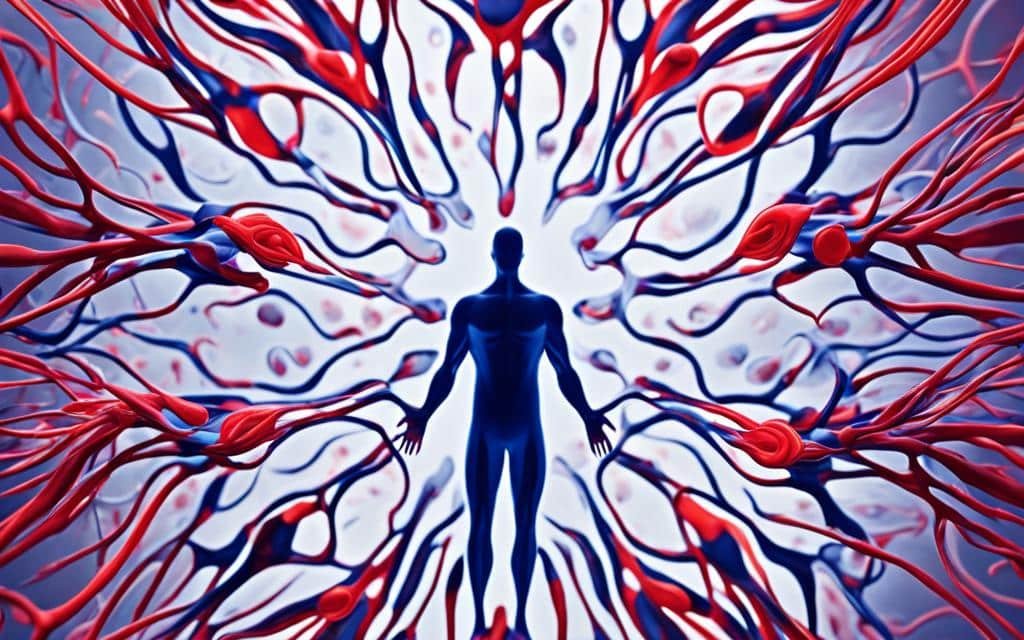Have you ever found yourself falling in love at the drop of a hat? Your heart racing, emotions soaring, and a whirlwind of passion engulfing your every thought? If so, you may be familiar with the enigmatic trait known as emophilia.
Emophilia is the tendency to easily and frequently fall in love, giving your all right from the start. It’s like a rollercoaster ride of emotions, where each new connection has the potential to sweep you off your feet and take your breath away. But what exactly is emophilia, and what does it mean for your relationships?
Join us as we delve into the captivating world of emophilia, understanding its dynamics, and exploring the science behind it. Whether you’ve experienced emophilia firsthand or know someone who has, this article will provide you with valuable insights and guidance on navigating the highs and lows of this emotional journey.
So fasten your seatbelt and get ready to embark on a fascinating exploration of emophilia, where love knows no bounds.
Key Takeaways:
- Emophilia is the tendency to easily and frequently fall in love, giving your all right from the start.
- Understanding the science behind emophilia can provide insights into the emotional experiences associated with this trait.
- Differentiating emophilia from attachment anxiety is crucial for recognizing and navigating these traits in oneself and others.
- Emophilia comes with both positive and negative aspects, and recognizing the risks and vulnerabilities can help maintain healthy relationships.
- By recognizing the signs and indicators of emophilia, individuals can make conscious choices in their relationships and foster personal growth.
What Is Emophilia?
Emophilia is a unique trait characterized by the tendency to easily and frequently fall in love with others. It involves quickly developing deep emotional connections with new romantic partners, often exhibiting behaviors such as spending a significant amount of time with a new partner, expressing love early in the relationship, and feeling deeply in love with multiple people simultaneously.
Defining Emophilia in the Context of Relationships
Emophilia, also known as emotional promiscuity, captures the essence of falling in love quickly and effortlessly. It is a term used to describe the propensity to give 100% of one’s emotional investment into a relationship right from the start. Unlike attachment anxiety, which stems from fear of abandonment and low self-worth, emophilia involves embracing love with intensity and immediacy.
The Historical Perspective of Emotional Promiscuity
The concept of emotional promiscuity, synonymous with emophilia, has historical roots in individuals who readily open themselves up to love and readily engage in romantic relationships. Throughout history, there have been those who possess an innate willingness to form emotional connections and experience the highs and lows of love more frequently than others. Understanding this historical aspect helps illuminate the dynamics and challenges associated with emophilia in relationships.

The Emotional Landscape of Falling in Love with Ease
Falling in love with ease creates a unique emotional landscape. People who experience emophilia often describe a whirlwind of intense emotions, such as excitement, happiness, and a surge of energy. The journey of falling in love effortlessly can lead to a reorientation of one’s life around the new partner, with all aspects of daily life influenced by the depth of emotion experienced.
Building a new attachment and creating a deep emotional bond are vital components of falling in love. The emotional landscape of emophilia is characterized by a rapid and intense experience of love. It can feel like being immersed in a vast ocean of emotions, where every moment is filled with heightened sensations and connection.
Experiencing love easily and frequently can be likened to exploring an emotional universe, where every interaction is infused with intense meaning and significance.

In this image, we see a couple in a close embrace, capturing the essence of the emotional landscape of falling in love. The intense emotions and connections that emophilia brings can be seen in the joy and contentment on their faces.
The Science Behind Emophilia: A Neurological Insight
Understanding the science behind emophilia is essential to gain insights into the neurological basis and attachment styles associated with this intriguing trait. Dopamine, a neurotransmitter closely linked to reward and pleasure, plays a significant role in the experience of love.
Dopamine and the “High” of Love
When you fall in love, your brain releases dopamine, creating a state of exhilaration and intense emotions. Dopamine is responsible for the euphoric “high” that accompanies the early stages of a romantic relationship. It leads to feelings of excitement, happiness, and a sense of energy that can be addictive and thrilling.
Attachment Styles and Their Role in Emophilia
Attachment styles, developed in early childhood, also contribute to the manifestation of emophilia. These styles shape how individuals form and maintain relationships throughout their lives. Anxious or avoidant attachment styles, for example, can influence the intensity and frequency of falling in love.
The interaction between attachment styles and emophilia is complex. Individuals with an anxious attachment style may be more prone to experiencing emophilia due to their intense need for love and reassurance. On the other hand, those with an avoidant attachment style may struggle with forming deep emotional connections, leading to a lesser likelihood of emophilia.
Understanding the role of dopamine and attachment styles provides valuable insights into the underlying mechanisms driving emophilia. By unraveling the neurological basis and exploring attachment patterns, we can gain a deeper understanding of this unique phenomenon.
Emophilia vs. Attachment Anxiety: Understanding the Difference
Emophilia and attachment anxiety are two related yet distinct traits that can significantly impact relationship dynamics. It is essential to understand the difference between these two traits in order to navigate them effectively in ourselves and others.
Unpacking Attachment Anxiety
Attachment anxiety is a chronic disposition characterized by a deep fear of abandonment and low self-worth. Individuals with attachment anxiety often have a strong need for love and reassurance in their relationships. They may constantly seek validation from their partners, fearing rejection and questioning their own value.
How Emophilia Alters Early Relationship Dynamics
On the other hand, emophilia involves a tendency to quickly and easily fall in love and invest one’s emotions fully in a relationship. Emophiliacs experience intense feelings of love and passion from the early stages, creating a rapid and intense emotional connection. This can lead to a whirlwind romance and an all-consuming focus on the new partner.

While attachment anxiety and emophilia may share some similarities in their desire for love and connection, their manifestations and underlying motivations are fundamentally different. Attachment anxiety stems from deep-seated fears and insecurities, while emophilia is rooted in a propensity for quick and intense emotional bonding.
Recognizing the distinction between emophilia and attachment anxiety is crucial in developing self-awareness and understanding the dynamics of our relationships. By understanding these traits, we can navigate them more effectively, fostering healthier connections and building more fulfilling partnerships.
| Emophilia | Attachment Anxiety | |
|---|---|---|
| Description | Quickly and easily falling in love; intense emotional connection | Chronic fear of abandonment; strong need for love and reassurance |
| Emotional Investment | Giving 100% in a relationship | Seeking constant validation and reassurance |
| Early Relationship Dynamics | Rapid and intense emotional connection | Fear of rejection and questioning self-worth |
In summary, understanding the difference between emophilia and attachment anxiety is key to navigating these traits and creating fulfilling relationships. While attachment anxiety is characterized by fears and insecurities, emophilia involves quick and intense emotional bonding. By recognizing and addressing these traits, we can foster healthier connections and build stronger, more sustainable relationships.
The Dark Side of Falling in Love Quickly: Risks and Vulnerabilities
While falling in love quickly can be exhilarating, there are also risks and vulnerabilities associated with emophilia. It’s important to be aware of the challenges that come with this trait to maintain healthy and fulfilling relationships.
People who experience emophilia may be prone to overlooking “red flags” in relationships and being attracted to toxic partners. The quick emotional investment in relationships can make it more difficult to recognize warning signs and engage in critical evaluation of potential partners.
Additionally, emophilia can make individuals more likely to fall for people with dark personality traits, such as narcissism, Machiavellianism, and psychopathy. This vulnerability can lead to repeated unhealthy relationship experiences, as individuals with these traits may take advantage of the emotional intensity and vulnerability associated with emophilia.
Recognizing the dark side of falling in love quickly is crucial for maintaining healthy and fulfilling relationships. It’s important to take the time to assess potential partners and prioritize emotional well-being. By being mindful of the risks of falling in love quickly, individuals with emophilia can make more informed choices and build healthier connections.

| Risks of Falling in Love Quickly | Vulnerabilities of Emophilia | Challenges of Emophilia |
|---|---|---|
| – Overlooking red flags in relationships | – Attraction to toxic partners | – Difficulty recognizing warning signs |
| – Falling for people with dark personality traits | – Vulnerability to manipulation | – Repeated unhealthy relationship experiences |
| – Rapid emotional investment in relationships | – Intensity and vulnerability |
Recognizing the Signs: Emophilia and Its Indicators
Recognizing the signs and indicators of emophilia is vital for self-awareness and relationship success. By understanding the patterns and behaviors associated with emophilia, individuals can make conscious choices and navigate their relationships with greater awareness and intention.
Self-assessment for Emophilia: Key Questions to Ask Yourself
Self-assessment is an important tool in determining if you exhibit emophilia tendencies. Asking yourself key questions can provide valuable insights into your emotional patterns and tendencies.
- How quickly do you fall in love? Do you find yourself developing strong emotions for someone soon after meeting them?
- How frequently do you form romantic connections? Do you often find yourself attracted to new partners?
- How emotionally invested are you in your relationships? Do you give 100% of your emotional energy right from the start?
Reflecting on these questions can help you gain a better understanding of your own romantic inclinations and whether emophilia may be a part of your emotional landscape.
Patterns of Behavior: Are You Prone to Emophilia?
Recognizing patterns of behavior can also indicate a predisposition to emophilia. Pay attention to how you engage in romantic relationships and the following actions:
- Spending excessive time with a new partner, often at the expense of other obligations or relationships.
- Feeling intensely in love early on in a relationship, before truly getting to know the person.
- Experiencing emotional highs and lows in a rapid and intense manner.
These behaviors could be indicators of emophilia and may impact your relationship dynamics. By identifying these patterns, you can make informed choices and communicate effectively with your partners.
Conclusion
Emophilia is a fascinating trait characterized by a natural inclination to easily and frequently fall in love. By understanding the science behind emophilia, including the neurological basis and attachment styles, we gain insight into the experiences and challenges associated with this unique trait.
Differentiating emophilia from attachment anxiety is crucial in recognizing and navigating these traits in both yourself and others. Emophilia brings both positive and negative aspects to relationships, and being aware of the risks and vulnerabilities can empower individuals to form healthy and fulfilling connections.
Recognizing the signs and indicators of emophilia through self-assessment and awareness of behavior patterns is essential for personal growth and relationship success. By acknowledging and embracing your own emophilia tendencies, you can navigate your own experiences with greater awareness and intention.
In summary, understanding emophilia provides valuable insights into the dynamics of love and relationships. It opens doors for individuals to embrace their unique traits, make informed choices, and build strong and meaningful connections. Emophilia is a beautiful and powerful aspect of human nature that should be embraced and celebrated.
FAQ
What is emophilia?
Emophilia is the tendency to easily and frequently fall in love with others. It involves quickly developing deep emotional connections with new romantic partners.
How is emophilia defined in the context of relationships?
Emophilia is often characterized by behaviors such as spending a significant amount of time with a new partner, expressing love early in the relationship, and feeling deeply in love with multiple people at the same time.
What is the historical perspective of emotional promiscuity?
Historically, the concept of emotional promiscuity has been linked to individuals who are open to love and quickly engage in romantic relationships.
What is the emotional landscape of falling in love with ease?
People who experience emophilia often describe feeling intense emotions, such as excitement, happiness, and a sense of energy. The emotional high of falling in love can lead to a reorientation of one’s life around the new partner.
What is the science behind emophilia?
The science behind emophilia involves understanding the neurological processes and attachment styles associated with this trait. Dopamine, a neurotransmitter associated with reward and pleasure, plays a key role in the experience of love. Emophilia is also influenced by attachment styles, which are formed in early childhood and impact how individuals form and maintain relationships.
How does emophilia differ from attachment anxiety?
Emophilia involves quickly and easily falling in love and giving 100% of one’s emotional investment in a relationship. Attachment anxiety, on the other hand, refers to a chronic disposition characterized by fear of abandonment and low self-worth.
What are the risks and vulnerabilities of emophilia?
While falling in love quickly can be exhilarating, people who experience emophilia may be prone to overlooking “red flags” in relationships and being attracted to toxic partners. The quick emotional investment in relationships can lead to repeated unhealthy relationship experiences.
How can one recognize the signs of emophilia?
Recognizing the signs and indicators of emophilia is vital for self-awareness and relationship success. Self-assessment can help individuals determine if they exhibit emophilia tendencies. Patterns of behavior, such as spending excessive time with new partners and feeling deeply in love early on, can indicate a predisposition to emophilia.
What is the conclusion on emophilia?
Understanding emophilia provides insight into the dynamics of love and relationships, allowing individuals to navigate their own experiences with greater awareness and intention.










